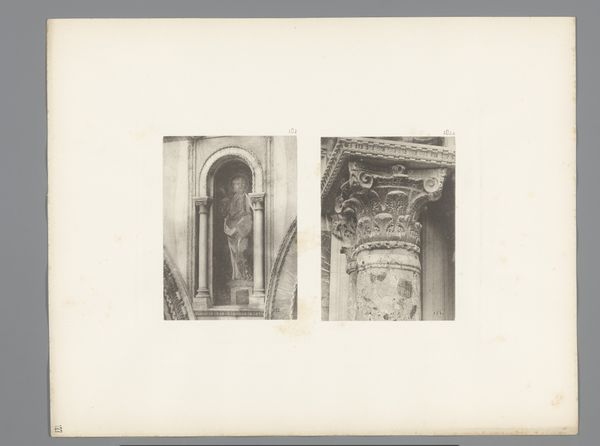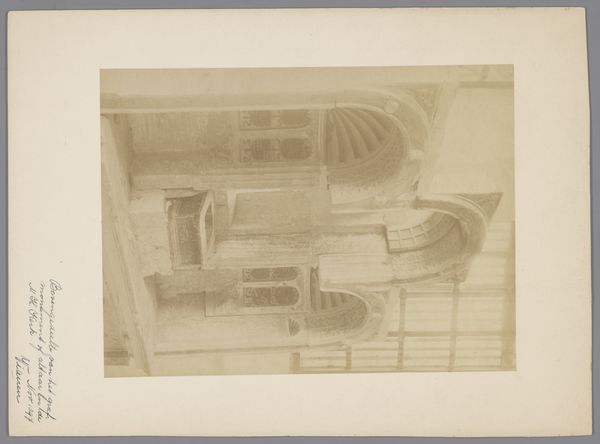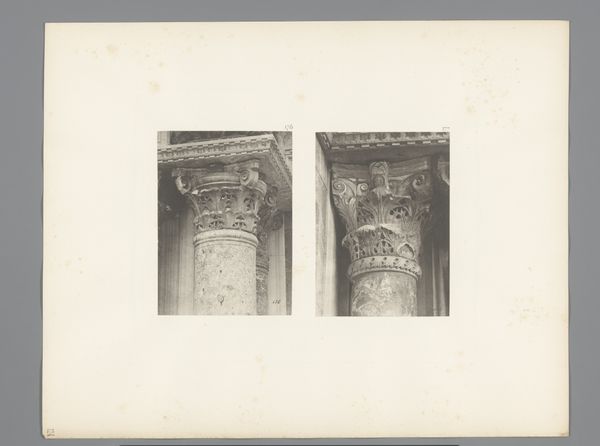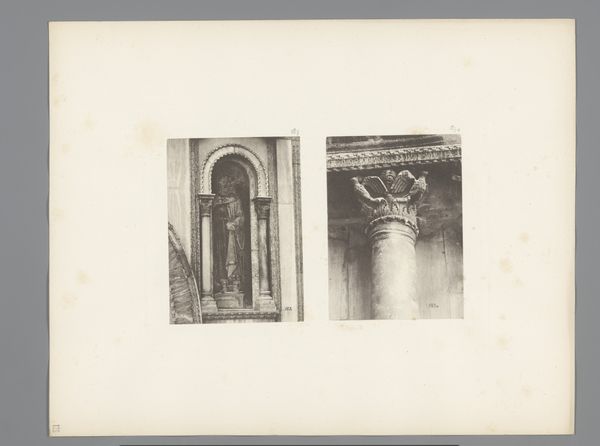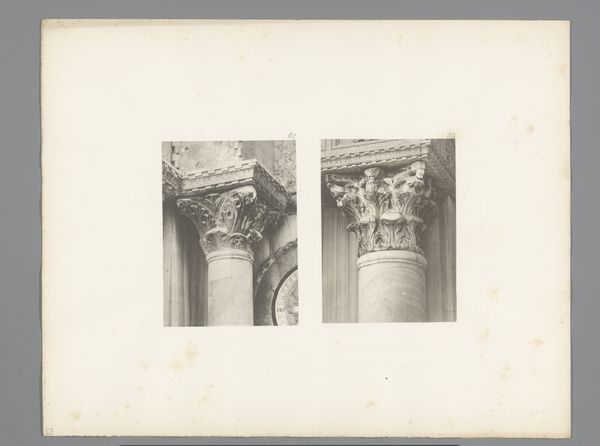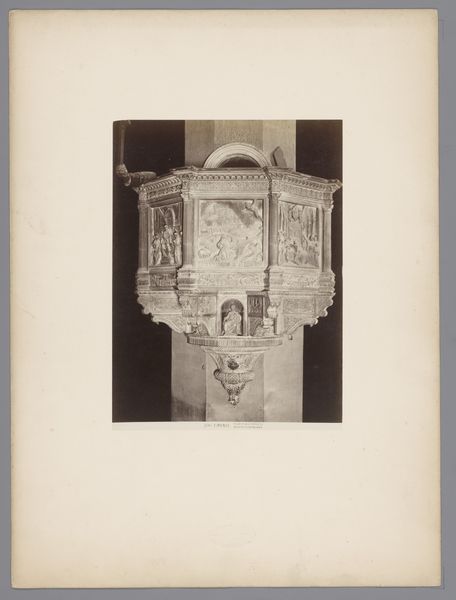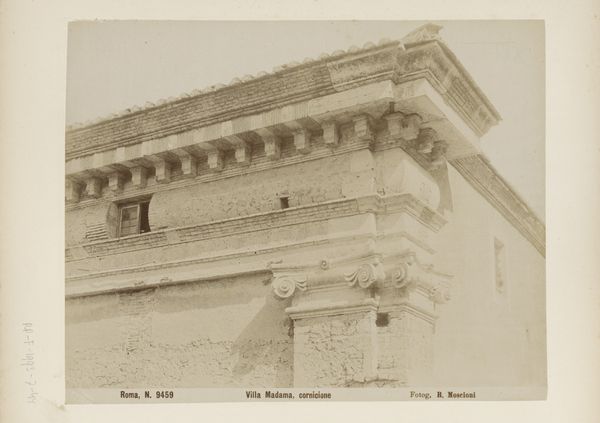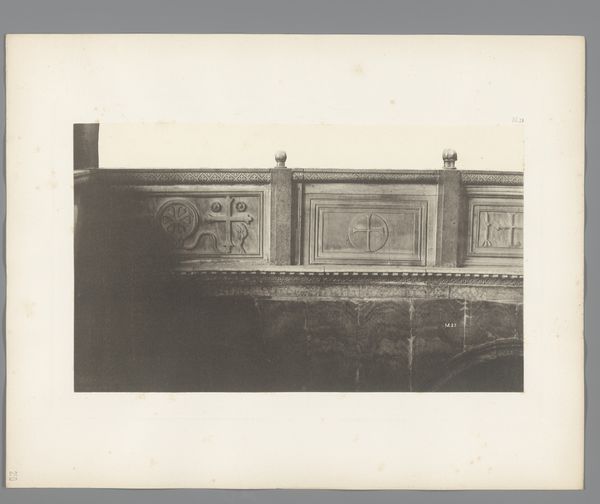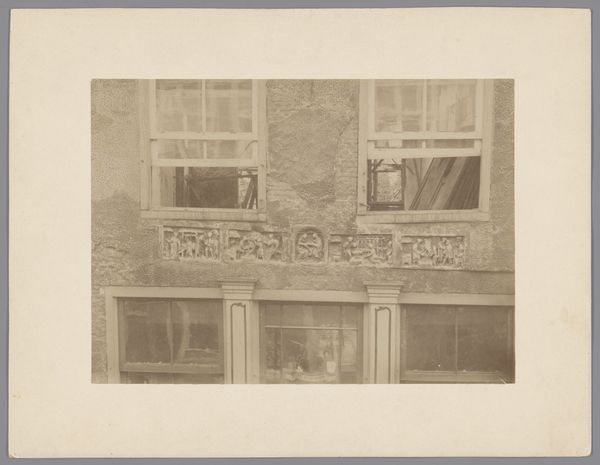
Zicht op het historische huis van koningin Blanche in Le Mans 1837
0:00
0:00
adolphejeanbaptistebayot
Rijksmuseum
drawing, paper, pencil, engraving
#
drawing
#
neoclacissism
#
old engraving style
#
paper
#
pencil
#
cityscape
#
history-painting
#
engraving
#
building
Dimensions: height 444 mm, width 299 mm
Copyright: Rijks Museum: Open Domain
Curator: This drawing by Adolphe Jean Baptiste Bayot, created in 1837, is entitled "Zicht op het historische huis van koningin Blanche in Le Mans" which translates to "View of the historic house of Queen Blanche in Le Mans." It's currently held in the Rijksmuseum collection. Editor: It feels very architectural. The detail is striking. All those lines! There's a precision that brings a stillness to the scene. Curator: The medium—pencil and engraving on paper—lends itself beautifully to this almost hyper-realistic depiction of the building. The artist meticulously renders the structure's facade, focusing on line, tone, and texture. Consider the repeating geometric shapes and their relationship to the overall design. It is textbook Neoclassicism! Editor: I see this less as an isolated formal exercise and more as a statement about historical narratives. Queen Blanche, a powerful medieval figure, in contrast to the working men. There is almost a class examination being displayed by the arrangement of people on the architecture. Curator: While it can be interpreted that way, consider that it's equally valid to appreciate the composition for its own merit. The arrangement of light and shadow create a visual hierarchy, inviting the eye to examine specific features of the building's architecture. What's more, it seems likely this drawing was always destined for mechanical reproduction – Bayot’s clean lines made for easy transfer onto a printing plate. Editor: But is that not exactly the point? The piece becomes not just about architectural representation, but a reflection of 19th century France's own project of historical re-representation and self-definition. And how do we grapple with what that has meant when it's reproduced and redistributed over time. Curator: Perhaps you’re right. But through my lens I find joy in its pure aesthetics. It reminds us that form itself holds power. Editor: And for me, it's a stark reminder that art never exists in a vacuum and these types of artwork can remind us of how we are living through time and the social conditions associated with that.
Comments
No comments
Be the first to comment and join the conversation on the ultimate creative platform.
